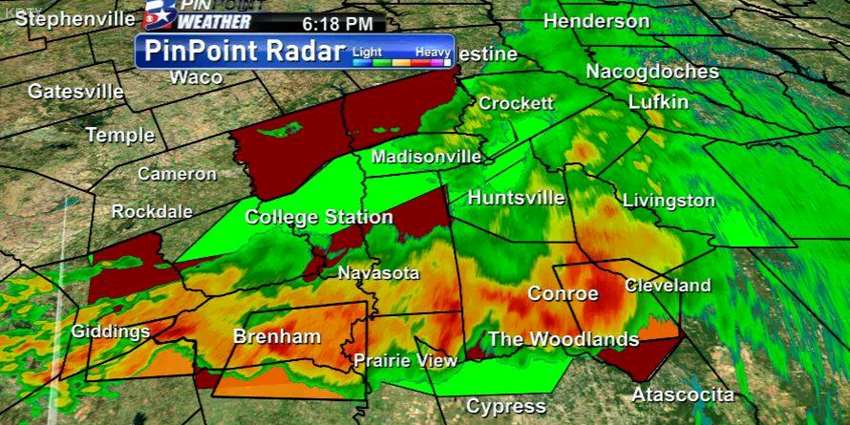From flash floods to flash droughts, the Brazos Valley is no stranger to severe weather. The region, which sits between the Navasota and Brazos rivers in southeast central Texas, has experienced extreme weather patterns in recent months. On May 26, three tornadoes hit in the area, beginning a series of weather woes.
KBTX Chief Meteorologist Shel Winkley presented a seminar, “The Weather Edge,” Sept. 13 at Texas A&M University to share his experiences as a weather expert and offer safety information for weather emergencies. The talk was part of the university’s Campus Safety Awareness Week.
Winkley, who joined the KBTX weather team in 2009, shared five tips on storm safety and preperation.
1. The best tornado defense strategy is to “D.U.C.K.” During a tornado warning, residents should seek shelter immediately, Winkley said during the lecture. The safest position, which can be remembered by the acronym D.U.C.K, is downstairs, underneath something such as a mattress or blanket, in the center of the house and keeping away from windows, he said. The idea is to put as many walls between you and the tornado as possible.
Twisters are a relatively rare occurrence in the Brazos Valley, but on May 26, an EF1 tornado with a peak wind speed of 110 mph touched down and traveled for 1.9 miles in Bryan. Two others touched down in Navasota, charting 110 and 115 mph winds, Winkley said.
There were no reported fatalities, but the tornados left significant destruction in some areas, he said.
2. When a road is flooded, “turn around, don’t drown.” Because floods can hide the conditions of roads, the safest option when facing a flooded road is to turn around and find an alternate route. If the road has been washed out by the flood, even large trucks could be swept away by a seemingly small amount of water, he said.
Flash flooding followed the May 26 tornadoes and marked the start to a long rainy season in the Brazos Valley, he said. Washington County, for example, had 10 inches of rain in less than four hours that day.
“One of the things that we kept stressing was if you don’t have to get outside and get on the roads, then don’t,” he said. “You’re putting yourself and other drivers in danger, but you’re also putting first responders in danger.”
It was the floodwaters, not tornadoes, that claimed four lives in Harris County that day, he said. “So what you’d expect to the deadliest part of the day, didn’t actually turn out to be.”
3. Plan for rainy days with an emergency supply kit. In case of extended bad weather or power outages, residents should stock emergency supplies such as flashlights, batteries, personal medications, canned food and water, he said.
Winkley recommended a gallon of water, per day, per person when rationing out water supplies. People should also plan for their pets’ needs and have cash, he said.
4. Expect the unexpected. While the Brazos Valley is relatively far from the coast, big tropical storms can still bring significant damage to the area, such as Hurricane Ike’s effects in 2008. “That’s why we talk about hurricane safety so much,” Winkley said. “We could still get some of the flooding and severe weather and tropical-storm-force winds.”
5. Download a weather app and stay updated on weather conditions. Winkley recommended downloading a weather app to receive live updates on current and future weather conditions.
The American Red Cross offers free emergency, tornado, hurricane and earthquake apps that alert users to nearby severe weather. For Brazos Valley residents, Winkley suggested downloading the KBTX News app, which gives custom severe weather push notifications by county as well as detailed daily weather forecasts, and following KBTX Weather on Twitter or Facebook.
“In this day and age, there is no reason why you shouldn’t know that there is severe weather happening,” he said.

